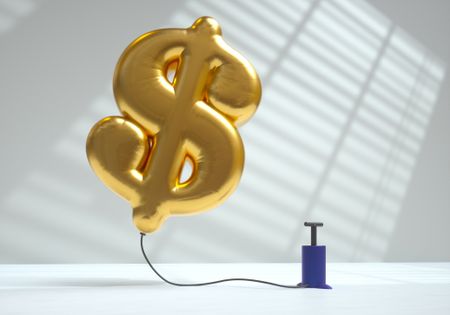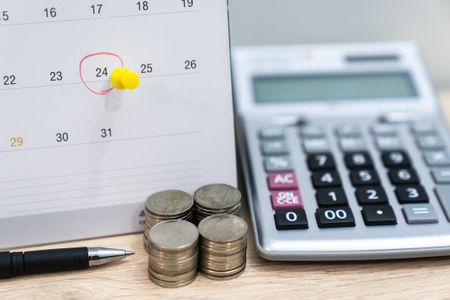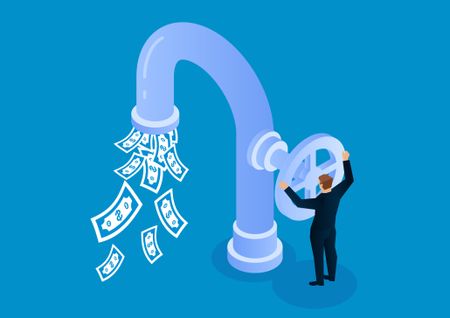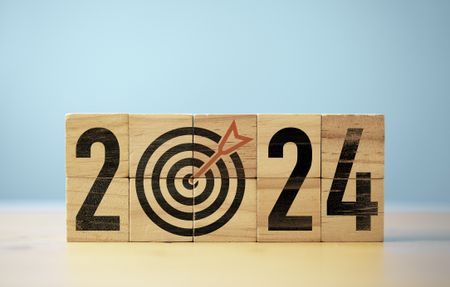The Five Best Load Funds for 2014
If you’re lucky, you can get these funds without paying sales charges.

There used to be a simple distinction between mutual funds based on the way they were marketed. No-load funds, which don’t charge commissions, were marketed to do-it-yourself investors. Brokers and advisers, by contrast, sold load funds, which charged commissions. The proceeds from those fees were used to compensate the intermediary.
Today, the line between load and no-load funds has blurred. That’s because you can buy many load funds without paying a sales fee. That might be the case if your 401(k) plan offers a load fund, for example, or if you work with an adviser who charges you on the basis of the size of your account rather than on a transaction-by-transaction basis. Meanwhile, the percentage of fund assets invested in no-load funds continues to grow.
Below, I identify my five favorite load funds for 2014. Three are from American Funds. No, I’m not in the tank for Capital Research & Management, the huge Los Angeles firm that runs American Funds. It’s just that American’s stock funds boast good long-term records, trade relatively little and levy some of the lowest annual fees you’ll find in the industry. Unlike almost all other load fund sponsors, American won’t let do-it-yourselfers buy its funds directly—you have to work with a broker or other intermediary. That said, American’s funds are included in many 401(k) plans.

Sign up for Kiplinger’s Free E-Newsletters
Profit and prosper with the best of expert advice on investing, taxes, retirement, personal finance and more - straight to your e-mail.
Profit and prosper with the best of expert advice - straight to your e-mail.
For each fund, I’ve listed the symbol for the lowest-cost no-load share class. Unless you can access that class through a 401(k) plan or you have big bucks, you’ll probably have to invest in a more costly class. Individual investors will often be offered only the Class A shares, which typically charge commissions of 5.75%. Returns are through December 31.
American Funds New World F2 (symbol NFFFX) offers a better way to invest in emerging markets. The fund currently has about 30% of assets in emerging-markets stocks and 50% in stocks of companies in developed foreign markets that do a lot of business in emerging nations. The other 20% is evenly divided between emerging-markets bonds and cash. Typically, the fund holds roughly equal weightings in developed and emerging-markets stocks, so the managers may well be worried about developing markets.
Why other fund companies haven’t come out with similar funds is beyond me. New World almost without fail beats developed-market stock indexes when emerging markets are strong and tops emerging-markets indexes when emerging markets tumble. For instance, over the past three years, New World gained an annualized 4.5%, while the MSCI Emerging Markets index lost 1.7%. Over the past ten years, the fund earned an annualized 11.2%. That was just 0.3 percentage point per year less than the Emerging Markets index and 3.8 points per year more than the MSCI EAFE index, which tracks stocks of developed foreign markets.
American Funds New Perspective F2 (ANWFX) is a global fund, too, but it’s much more conventional than First Eagle Global. Its current 6% cash position is about as much as it ever holds of the green stuff. Most of the rest of its holdings are in stocks—mostly those of gigantic multinational companies, with little regard to where they’re domiciled. At last report, its current top holdings are Novo Nordisk (NVO), a Denmark-based drug company; Amazon.com (AMZN); Google (GOOG); and Naspers (NSPNY), a South African-based media company that’s involved in e-commerce in emerging markets. Overall, almost half of New Perspective’s stocks are based in the U.S.—the highest level since mid 2002. Less than 4% of its assets are in emerging markets.
New Perspectives has been a solid performer. The F2 share class doesn’t have a long-term record. But the fund’s older Class A shares returned an annualized 9.2% over the past ten years, an average of 1.6 percentage points per year better than the MSCI World index. In the 2007-09 bear market, the Class A shares lost 50.8%, compared with 57.1% for the index.
The eight co-managers use American Funds’ longtime method for managing money: Each manager invests a slice of the fund, and his or her compensation is based largely on how that slice performs. Although the managers have their own styles, the fund tends to own mostly growth companies that are thought to have temporary problems. Expenses are just 0.54% annually.
American Funds Washington Mutual F2 (WMFFX) invests almost exclusively in stocks of giant companies with strong balance sheets, high profitability and long records of paying dividends. You won’t find the next Microsoft here, but you will find the current, mature version of Microsoft (MSFT) along with other blue chips, such as Boeing (BA), Home Depot (HD), Merck (MRK) and PepsiCo (PEP). The five co-managers trade infrequently: Stocks stay in the fund an average of about five years. The F2 shares charge just 0.41% annually.
For a pure stock fund that generally holds little cash, it is conservative. Washington Mutual exhibits 17% less volatility than Standard & Poor’s 500-stock index. In the 2007-09 bear market, the older Class A shares lost 54.0%, compared with the S&P 500’s 37.0% plunge. Over the past ten years, the Class A shares returned an annualized 7.2%—an average of 0.2-percentage point worse than the S&P.
Weighed down by an 8% stake in gold and gold-mining shares and a hefty slug of cash, First Eagle Global I (SGIIX) lagged its benchmark, the MSCI World index, by 11.6 percentage points in 2013. That’s pretty much what I’d expect from a value-oriented fund that makes not losing money its primary goal—and generally puts a big chunk of its assets in gold, bonds and cash (though not usually 22%, the fund’s cash position at last report). In today’s market, the managers are finding few bargains in either the stock or bond markets.
The fund thrives in flat and down markets. In 2008, for instance, it lost just 20.9%, while the MSCI World index plunged 40.3%. Over the past five years, First Eagle returned an annualized 13.7%, an average of 2.0 percentage points less than the MSCI World index. Considering the ferocity of the bull market for most of that period, the fund’s underperformance isn’t unexpected. Meanwhile, it was 30% less volatile than its benchmark over the past five years.
Jean-Marie Eveillard built a long and superior record at First Eagle and its previous incarnations before retiring in 2009. Eveillard, 74, still works a couple of days a week as “senior adviser,” and he helped select the fund’s three co-managers. The question mark over First Eagle is whether Eveillard successfully transferred his methods to the current managers. So far, I think the indications are that he has.
My final pick is a bond fund, Templeton Global Total Return (TTRZX). Templeton chalked up a good year in 2013, even as most bond funds floundered. It returned 3.8%, compared with a 2.0% loss for the Barclays Global Aggregate Bond index. Over the past five years, Templeton Global returned an annualized 11.9%—an average of 8.0 percentage points better than the index. Lead manager Michael Hasenstab has posted similar results for an older sibling, Templeton Global Bond (TGBAX), since taking the fund’s reins at the end of 2001.
Templeton Global is hardly an ordinary bond fund. For starters, it hunts for value in the world’s bond and currency markets. Hasenstab for years has found his best buys in emerging-markets bonds and currencies, but he has also been shorting the Japanese yen—that is, betting the currency would decline in value. In addition to government debt, the fund has close to 20% in corporate bonds, including some high-yielding “junk” bonds.
The fund exhibits about the same volatility you’d expect in a balanced fund with 60% or so of assets in stocks. But it stands to lose little, if anything, when yields rise. In sum, this is a wonderful, but risky, fund. Don’t overdo it.
How did my 2013 load fund picks do? The one domestic stock fund, American Funds Fundamental Investors F1 (AFIFX), returned 31.4%, compared with 32.4% for the S&P 500. The emerging-markets fund, Oppenheimer Developing Markets A (ODMAX), returned 8.4%, compared with a loss of 2.3% for the MSCI Emerging Markets index. American Funds New World, First Eagle Global and Templeton Global Total Return are repeat picks; their records are discussed above.
Steven T. Goldberg is an investment adviser in the Washington, D.C., area. Several of his clients own Novo Nordisk.
Get Kiplinger Today newsletter — free
Profit and prosper with the best of Kiplinger's advice on investing, taxes, retirement, personal finance and much more. Delivered daily. Enter your email in the box and click Sign Me Up.

-
 RMD Deadline April 1: Five Tax Strategies to Manage Your 2025 Income
RMD Deadline April 1: Five Tax Strategies to Manage Your 2025 IncomeTaxable Income The April 1, 2025, deadline for required minimum distributions (RMDs) is fast approaching for retirees who turned 73 in 2024.
By Kelley R. Taylor Published
-
 Rising AI Demand Stokes Undersea Investments
Rising AI Demand Stokes Undersea InvestmentsThe Kiplinger Letter As demand soars for AI, there’s a need to transport huge amounts of data across oceans. Tech giants have big plans for new submarine cables, including the longest ever.
By John Miley Published
-
 How Inflation, Deflation and Other 'Flations' Impact Your Stock Portfolio
How Inflation, Deflation and Other 'Flations' Impact Your Stock PortfolioThere are five different types of "flations" that not only impact the economy, but also your investment returns. Here's how to adjust your portfolio for each one.
By Kim Clark Published
-
 Kiplinger's Economic Calendar for This Week (March 31-April 4)
Kiplinger's Economic Calendar for This Week (March 31-April 4)This week's economic calendar features a steady stream of jobs data and an end-of-week speech from Fed Chair Powell.
By Karee Venema Last updated
-
 Why I Still Won't Buy Gold: Glassman
Why I Still Won't Buy Gold: GlassmanOne reason I won't buy gold is because while stocks rise briskly over time – not every month or year, but certainly every decade – gold does not.
By James K. Glassman Published
-
 Should You Use a 25x4 Portfolio Allocation?
Should You Use a 25x4 Portfolio Allocation?The 25x4 portfolio is supposed to be the new 60/40. Should you bite?
By Nellie S. Huang Published
-
 Retirement Income Funds to Keep Cash Flowing In Your Golden Years
Retirement Income Funds to Keep Cash Flowing In Your Golden YearsRetirement income funds are aimed to engineer a steady payout of cash for retirees. Here are a few we like.
By Nellie S. Huang Last updated
-
 10 2024 Stock Picks From An Investing Expert
10 2024 Stock Picks From An Investing ExpertThese 2024 stock picks have the potential to beat the market over the next 12 months.
By James K. Glassman Published
-
 Special Dividends Are On The Rise — Here's What to Know About Them
Special Dividends Are On The Rise — Here's What to Know About ThemMore companies are paying out special dividends this year. Here's what that means.
By Kim Clark Published
-
 How to Invest in AI
How to Invest in AIInvestors wanting to know how to invest in AI should consider these companies that stand to benefit from the boom.
By Kim Clark Published